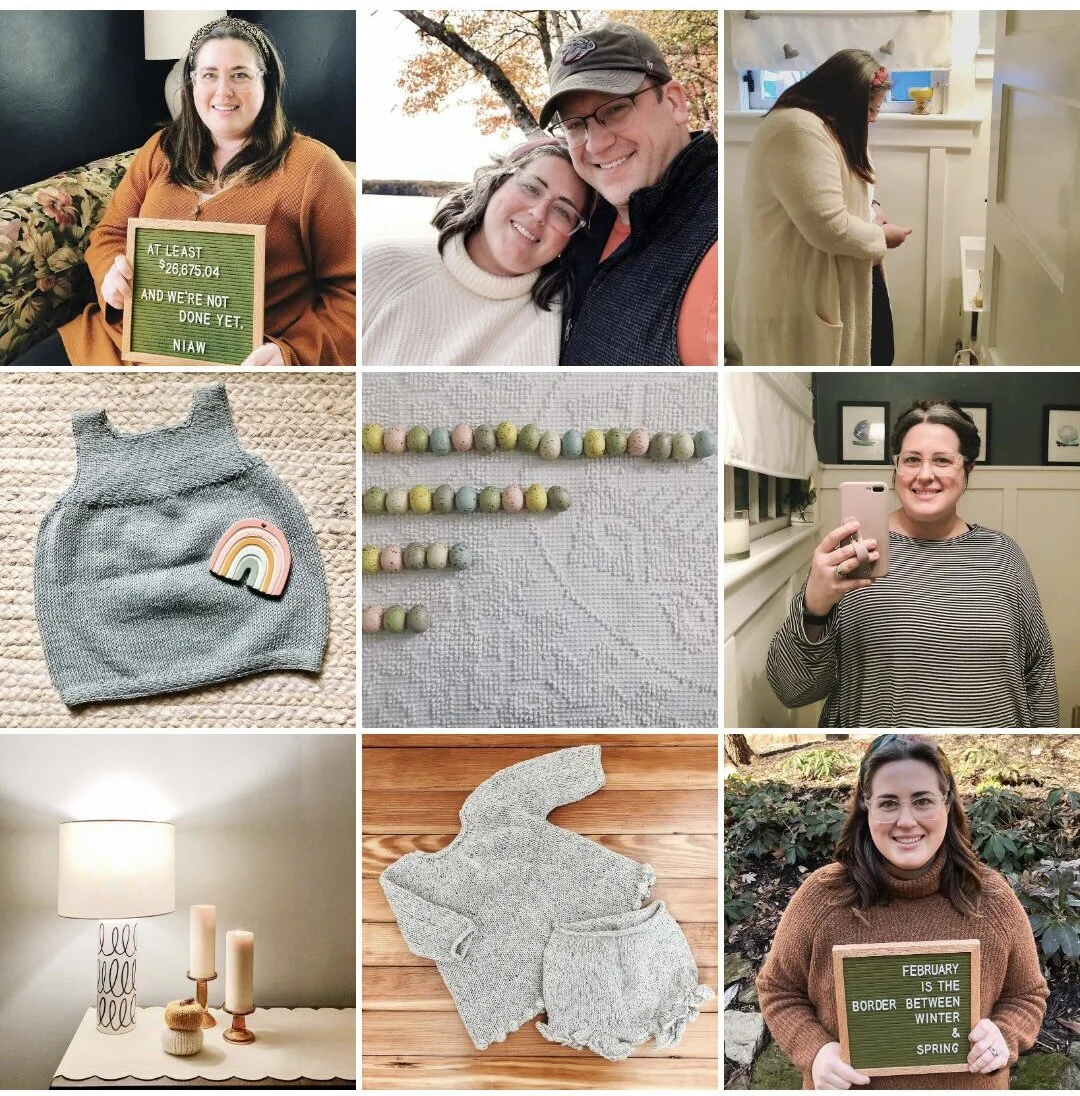The Costs of Infertility
/Infertility impacts approximately 15% of couples in America and is a result of abnormal functioning of the male or female reproductive systems. Because I have Polycystic Ovarian Syndrome (PCOS), I live with one of the most common causes of infertility in women.
To be clear, my goal with these posts is to be open. Since we began fertility treatments in 2017 I've done a lot of searching to find experiences and stories from women living with PCOS and/or going through fertility treatments, and so far I haven't come up with much. Because I want to hear about what other women are experiencing, I am sure that others out there feel the same. While I know this is my story, I hope that by sharing it openly I will help someone else through whatever they are experiencing.
As I have shared more openly about our infertility journey and the treatments that we’ve tried over the years, I’ve become a bit desensitized to how often people ask me what everything costs or how we’re paying for all of this.
In our situation, these treatments have been something we’ve paid for almost entirely out of pocket. While infertility testing is covered under our health insurance, the actual infertility treatments are not covered (I’ll let you guess which costs more). Because we had such generous help from our families once we began the IVF process in 2020, and we were able to creatively stretch our budget when we needed to, we also chose not to finance our treatments. But while there are very real financial costs to infertility, it’s the physical and mental costs that I anticipated even less when we began our treatments five years ago!
financial
When it comes to infertility treatments, costs add up quickly depending on the type of treatment you are pursuing. In the first three years that we were undergoing treatments, our total costs were about $5,000. None of those treatments were covered by our health insurance either, but we weren’t keeping close track of our costs at that point because we didn’t think we needed to. We assumed that the less invasive treatment approach was going to work for us, and we didn’t think about how much we potentially were going to spend over time.
To contrast those first three years, I’ve broken down below what we spent in 2020 alone as a result of undergoing IVF treatments. Our treatments last year included two hysteroscopy’s, two egg retrievals, one ERA, one frozen embryo transfer (FET), one D&E following miscarriage, and a multitude of blood work, including a recurrent pregnancy loss panel. These costs don’t include anything that we’ve spent so far in 2021 as we’ve undergone another FET process:
Medications, supplements and supplies (supplements for both of us, organization supplies, medications for two egg retrieval rounds, OHSS medications, ERA and first FET medications) = $7,630.04
Travel (gas, parking fees - we stopped tracking these costs after a while) = $199.11
Fertility clinic office visit costs (initial consultation visit, copay’s for OHSS monitoring visits after our second egg retrieval, three visits covered by copay’s during the ERA cycle, copay’s for weekly monitoring appointments once pregnancy was confirmed following our first FET through week 10, and copay costs for a D&E following miscarriage at week 10) = $760.70
Procedure and lab costs paid to our fertility clinic (monitoring visits, blood work costs, two egg retrievals, ICSI fertilization method twice, embryo freezing and storage, first FET) = $29,489.96
Procedure and lab costs paid to external companies (two rounds of anesthesia, two rounds of embryo genetic testing, ERA testing) = $4,345
Total spent in 2020 = $42,424.81
For some context, that amount is about three times more than the down payment we made on our house when we purchased it in 2017. You also could buy a new SUV for about what we spent last year on infertility treatments.
We have navigated these costs during a period of time where we have been primarily a one-income household. When we were in Florida, Kurt made a small stipend as a PhD student, but since we’ve been in Pennsylvania, he has not been able to find consistent work. And while he did start at a full-time job at the end of 2019, his position was eliminated once the COVID-19 pandemic started early in 2020, putting us back at square one. Our lack of funds coupled with the very regular IVF treatment bills has been a big source of stress for us and without the help from our families that we received, IVF would likely have never become a reality for us.
physical
Choosing to inject your body with a lot of hormones and undergoing multiple procedures as a part of the IVF process absolutely has a physical impact. For me, that impact existed in three different parts - general exhaustion, bruising and overall soreness, and weight gain.
There have been so many times when IVF has felt like a second job to me. Keeping track of injection and pill schedules, waking up super early multiple times a week to drive hours in the morning for the first monitoring appointments of the day, fluctuations in hormones and the resulting changes happening within your body, and going through multiple procedures throughout the year caused me to feel more tired than I ever have before. I expected to feel tired while going through the IVF process, but the number of days that I just felt generally exhausted was more than I expected. Being so tired also meant it was hard for me to have the energy to do much more than just go to work, go to monitoring appointments, follow my medication protocols, and sleep. I didn’t have the energy to keep up with some of those normal exercise outlets that I used to prioritize for myself, and I struggled to keep up with other projects and things around the house that typically were easy to get done.
In addition to feeling tired all the time, my body also just hurt more throughout IVF. My body became sore and bruised the longer I had to give myself injections. I’ve developed a slight allergy to bandage adhesive so it isn’t uncommon for me to have red, itchy marks for weeks at a time on my stomach and behind from daily bandage applications. When you’re stimulating follicle growth in your ovaries, they grow a significant amount in size as the follicles grow. That growth can cause a lot of discomfort in your abdomen. You’re bloated, your digestive tract slows down, and after our second egg retrieval those symptoms lasted for almost two additional weeks while I had OHSS. So for weeks at a time last year, I just constantly felt uncomfortable. My sleep patterns were often impacted as well, which meant even when I was trying to give my body the rest it was needing, it wasn’t getting it anyway.
Add on top of all of that weight gain from months of fluctuating hormones, eating for comfort when I just felt sad and stressed throughout the process, and just generally living through a pandemic in 2020! In total I gained about 10-15 pounds throughout 2020 and the IVF process. Right now that weight is sitting with me, and who knows how long it’ll be there. I’m choosing to not add pressure on myself to lose it because our journey isn’t over yet.
mental
What honestly took the greatest toll on me were the mental hurdles that presented themselves during our years of infertility treatments. While I didn’t dream of becoming a mom growing up, once that desire became more real for me, I really struggled with feelings of inadequacy - both as a woman and as a partner to Kurt. I knew that we would have trouble conceiving because of my PCOS diagnosis and I worried that all of the trouble we were going to have would be entirely my fault. Watching friends and family members get pregnant with seemingly no problems just exacerbated those feelings too.
Those feelings of inadequacy, along with some of the physical changes I was experiencing even early in our treatments, really impacted my confidence. It’s a big reason why we chose to take a break in 2019 - I needed to stop feeling like I was constantly letting Kurt down, and find a reason to be excited again about trying to start our family.
The other part of infertility treatments that constantly weighed on me during these four years is that no part of this process is guaranteed to work. I really felt the weight of that reality last year as we started the IVF process. All of the supplements, medicines, lifestyle adjustments, natural remedies, and doctors in the world can’t guarantee that any part of a treatment protocol will work. So as I navigated appointment after appointment, ultrasound after ultrasound, and injection after injection, there was always a part of me that was waiting for the other shoe to drop. Miscarrying the embryo from our first FET felt exactly like that last year; we were so close, and then all of a sudden we were so far away again from becoming parents. The emotional roller-coaster of infertility is very real, and it certainly has made continuing on with treatments after years of disappointment very difficult at times.
If I were to try and identify a silver lining for you all, I would say this; infertility - and navigating these different financial, physical, and mental costs over the last five years - has taught me a lot about myself and what I can handle. I feel like I have a better understanding of my strength as a woman, as a partner, and as a future mother. And I’ve learned to advocate for myself in ways I never knew I’d have to. While these costs have felt like so much at times, I’m starting to realize that the return on investment of infertility - while slow to show itself sometimes - can sometimes be worth it too.














